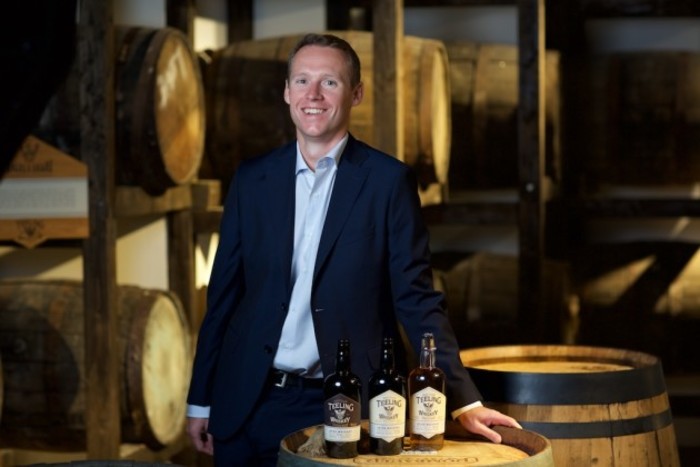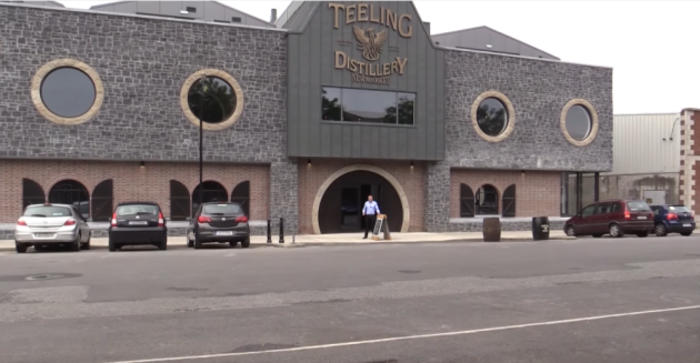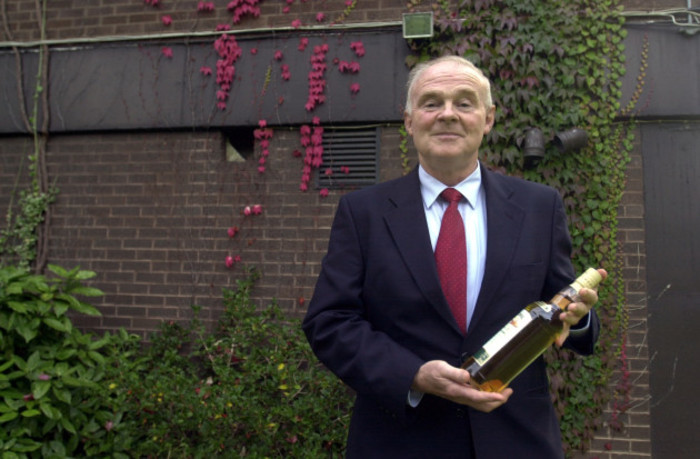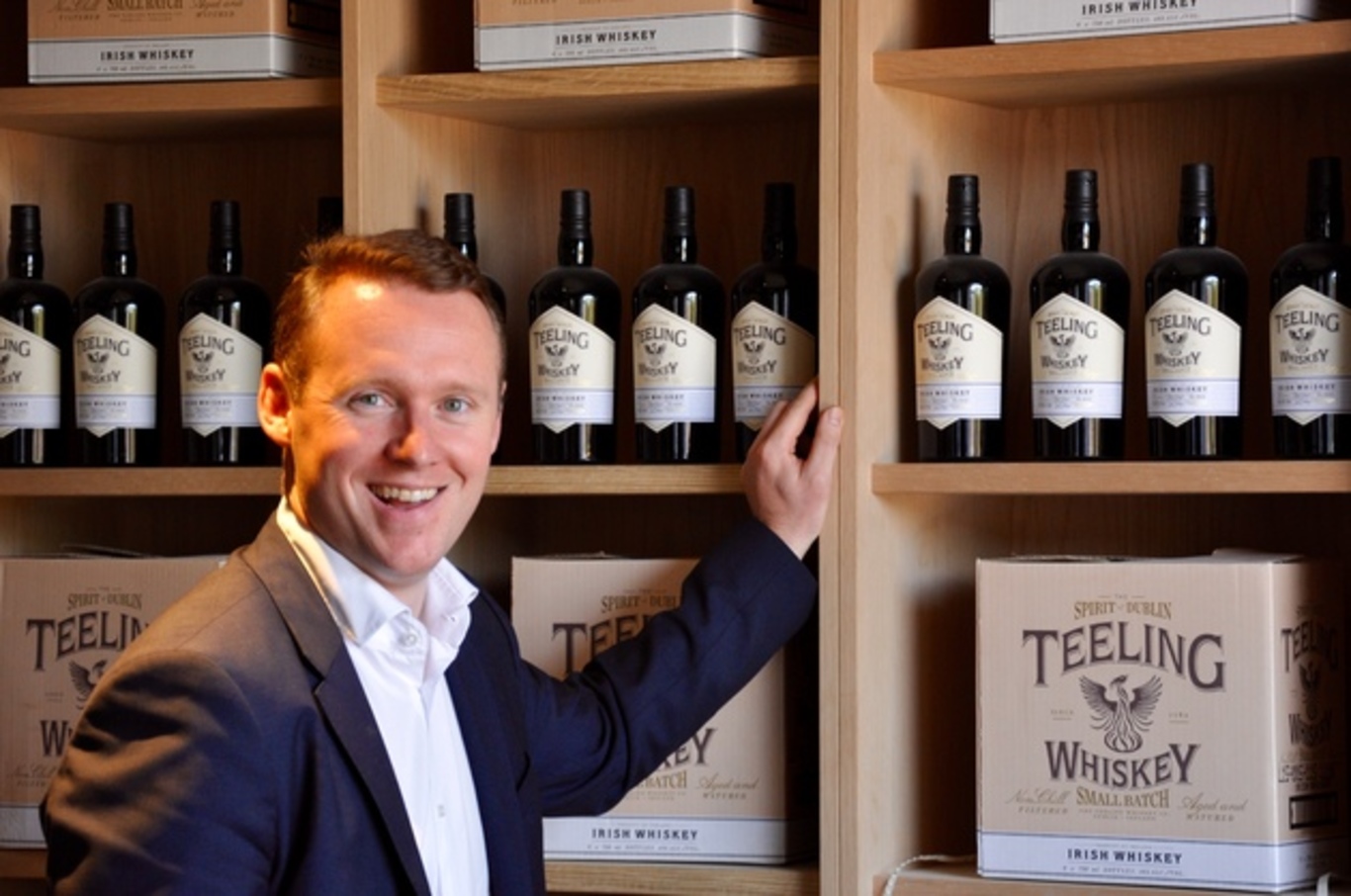'My father has been successful, but I didn't want to be seen as riding on his coat-tails'
As part of our How My Business Works series, we profile Dublin’s Teeling Distillery.
WHEN HIS FATHER offered him a job in his whiskey business, Jack Teeling didn’t think that he would be end up running a distillery himself in a few years.
The Clontarf native is the founder and co-owner of the Teeling Distillery, which was the first new distillery to be set up in the capital in 125 years when it opened its doors in 2015.
His father gave him a start in the sector, but initially it looked like Teeling would take a different career path entirely.
In his early 20s, he moved to Australia after completing a business degree and working in Anglo Irish Bank. Upon his return a few months later, his father asked if he would consider working for him.
The elder Teeling, John, a serial entrepreneur who has set up a string of resources firms, established the Cooley Distillery in a converted potato factory in Co Louth in 1987.
By the time Jack returned in 2001, the company was trading well, however he had his doubts as to whether it was wise to mix business and family.
“My father has been successful and I didn’t want to be seen to be riding on his coat-tails, I wanted to be standing on my own two feet,” Teeling tells Fora.
“I was in a good frame of mind when I came back from my travels, and I decided that it would be something interesting to do. I saw an opportunity to add value to Cooley.”
Jack progressed through the company and was made head of sales and marketing in 2007 before taking over as Cooley managing director in 2010, although his father was still very much involved with management as the executive chairman.
 Jack Teeling
Jack Teeling
The younger Teeling set about implementing some of his own ideas to improve the business, such as using different engineering techniques in an effort to make production more efficient.
Nevertheless, the changes brought with them tensions with some of the people who had helped to build the company over the prior two decades.
“I think I did a reasonable job of managing downwards, I’m not sure if I did as great a job managing upwards,” the 40-year-old says with a small laugh. “Maybe I should have done a better job of bringing the board along with me.”
Cooley sale
The overhaul was also disrupted by the fact that several larger companies were sniffing around the distillery looking for a buyout shortly after Jack took over.
Cooley was finally sold in 2012 to US spirits manufacturer Beam for €71 million, resulting in a huge windfall for the Teeling family.
As an equity shareholder in Cooley, Jack pocketed about €3 million for the sale of the business, which he used to start his own whiskey firm, Teeling Whiskey Company.
Teeling immediately started looking around Dublin for a suitable location for a new distillery and found one in Newmarket Square in the historic Liberties area near the city centre.
His brother Stephen joined him at the company and the two of them spent several years working on the project before it was ready to open. Although the planning process proved to be a slow one, the facility finally opened its doors in the middle of 2015.
 The Teeling distillery in Dublin
The Teeling distillery in Dublin
The Teeling Distillery started off with about 30 people in its early days, when construction works were finishing up, and now employs around 80 staff between its distillery and visitor centre, including those who work on a part-time basis.
As whiskey needs to mature for three years before it can be legally branded as ‘Irish whiskey’, Jack Teeling entered into a supply contract with Cooley when he left the company which meant that Teeling Whiskey had a product to sell from the onset.
In the family
Teeling Whiskey is profitable, earning about €3 million in 2015 after it repaid some bank loans.
This was mainly due to the fact that the firm was able to offload a big chunk of stock to Great Northern Distillery, developed in a former Harp lager brewery by John Teeling after Cooley was sold.
“The ability to have that money from Cooley made all the difference and I wouldn’t have got that without my father,” Jack says.
“We were heavily indebted initially, so it made sense to rebalance our balance sheet and repay our debt (by selling stock to Great Northern).
“I obviously want to be my own man and do my own thing, and my father is focused on the Great Northern Distillery.
“I’m a non-exec director, but there’s no real crossover. He’s doing his own thing and we’re focused on the Teeling Whiskey Company, we’re very separate in how we’re run.”
 John Teeling
John Teeling
Asked if he ever expected to be running a distillery at the same time as his father, Jack says: “Not at all, I never saw Cooley being sold, which was probably naive.
“My parents like to come to the distillery visitor centre on a Sunday, I think they take pride in what we’ve achieved with our distillery.”
€4,000 barrels
Being able to sell its whiskey promptly is vital for the company. As the casks that the whiskey is aged in are made from porous oak, a certain amount of the liquid is lost every year as the barrels interact with the environment.
“You lose about 5% in your first year, and then 2% every year after that,” Jack says.
“It’s hard forecasting future demand, so you tend to overproduce since whiskey becomes more valuable the longer you leave it.”
Storing the whiskey is also quite costly. The firm is renting a building at the moment and will probably splash out on its own storage unit soon, while high-quality barrels can also be very expensive.
“A bill just landed on my desk, €4,000 for four barrels,” Jack says.
He says that the firm is producing 660,000 litres of alcohol annually, which translates to roughly two million bottles of whiskey, depending on the size of the bottle and the concentration.
The company’s biggest market is the US, where Jack says bartenders and retailers are familiar with most of the major Irish whiskey brands and are always looking for something different.
“We see ourselves as a premium whiskey, and we find that people will dip into different types of premium drinks,” he says. “France, Germany, the Nordics and Australia are all key markets for us, where people are drinking premium Irish whiskey.”
 Inside the Teeling Distillery
Inside the Teeling Distillery
New generation
The whiskeys that Teeling is up against are mostly owned by massive multinationals with huge marketing budgets, such as Jameson, owned by French drinks giant Pernod Ricard.
Jack says that the firm tries to differentiate itself by focus on strong branding, pointing to things like the company’s quickly recognisable bottle and its family history.
“You can have the best whiskey in the world and a crappy bottle and it diminishes the experience of people drinking it, so we (put a lot of effort into that),” he says.
“Our story is me, us, my family, the new generation of Teelings bringing whiskey back to the city.”
The firm will be focused mainly on marketing to sell more over the next few years, and has stationed individual staff in far-flung regions of the globe, such as Hong Kong, in an effort to boost sales.
“The real challenge will be the next five years. (The industry) is dominated by multinationals, and there are lots of independents coming in as well,” Jack says.
“We want to have at least 25% growth year on year over the next five years and be established in the markets that we’re in. If we can take a relatively small slice of the pie, we will do very well.”
The Teeling Distillery is still at a fairly nascent stage compared to Cooley in its pomp, something Jack is very much aware of.
He says he has no intention of selling all or even part of the facility in the near future as he wants to keep it independent.
“It would be foolish to say ‘never’, but the plan was never to set up to sell,” he says. “In Cooley there were 300 or 400 other shareholders, so you weren’t really in control of your own destiny.
“We would want a compelling reason to dilute our equity in the business. We answer to no-one other than ourselves and we hope to go as far as we can ourselves.”
This article is part of our weekly series examining the nuts and bolts of businesses. If you would like to see your company featured please email news@fora.ie.






